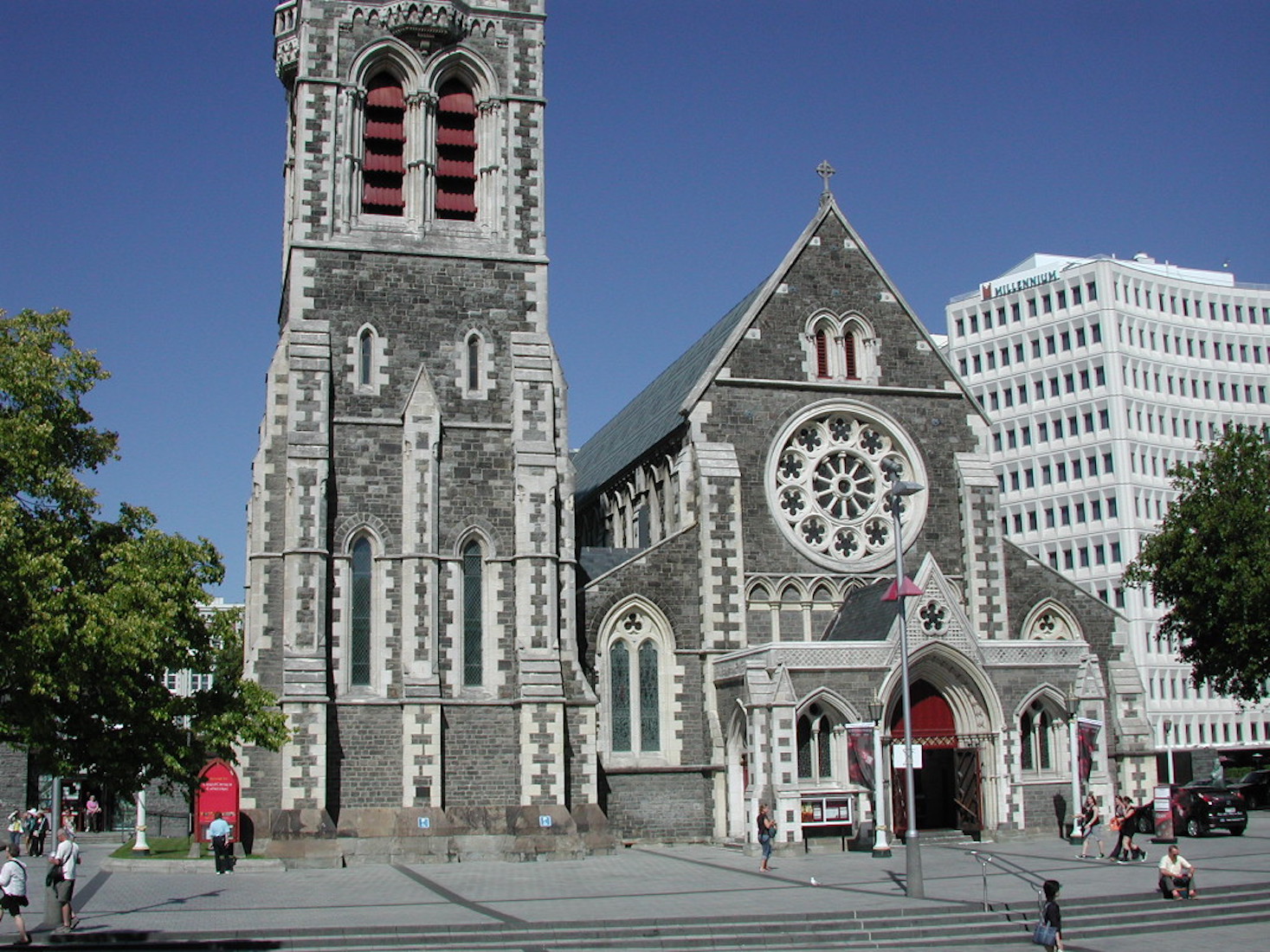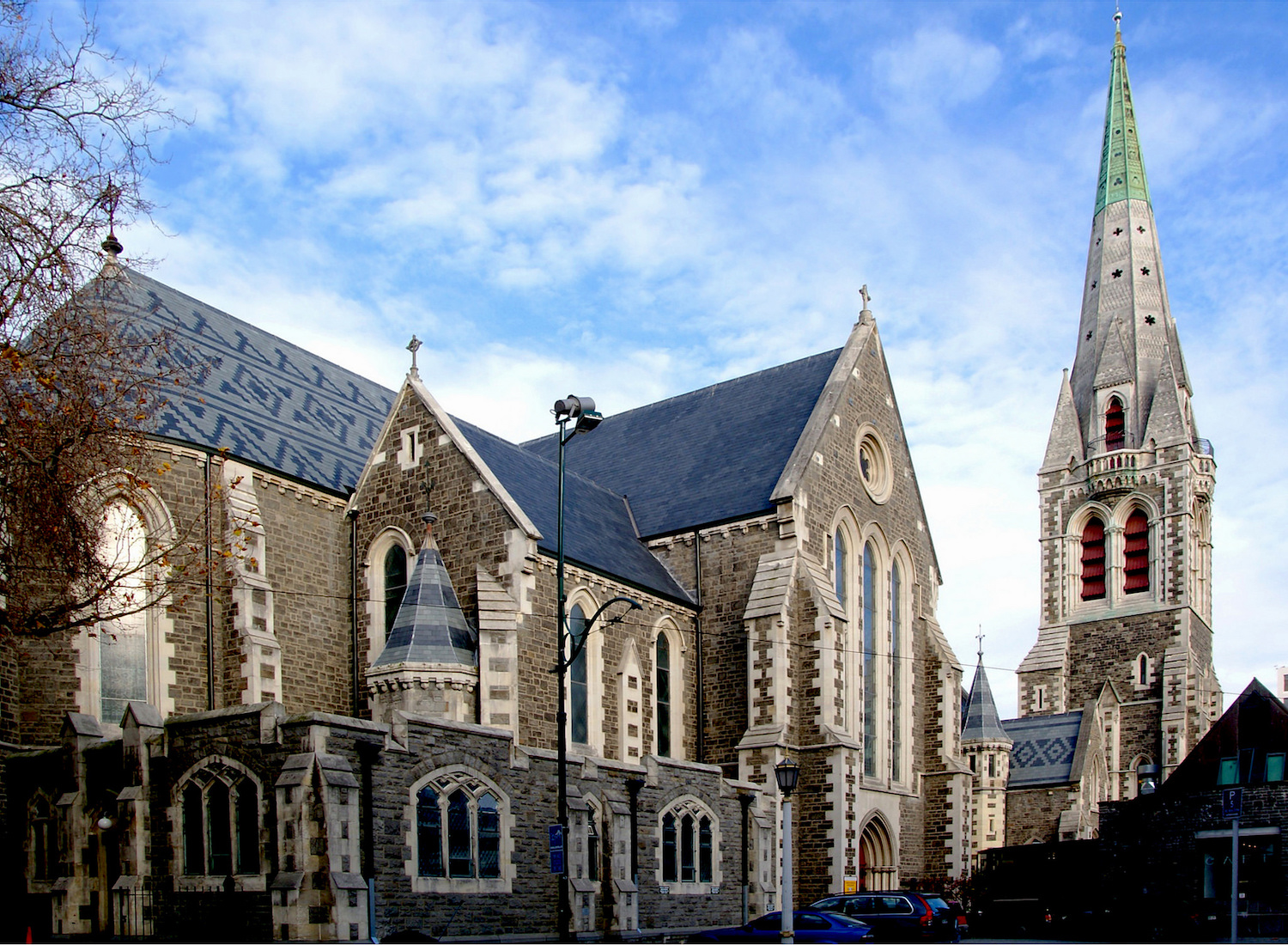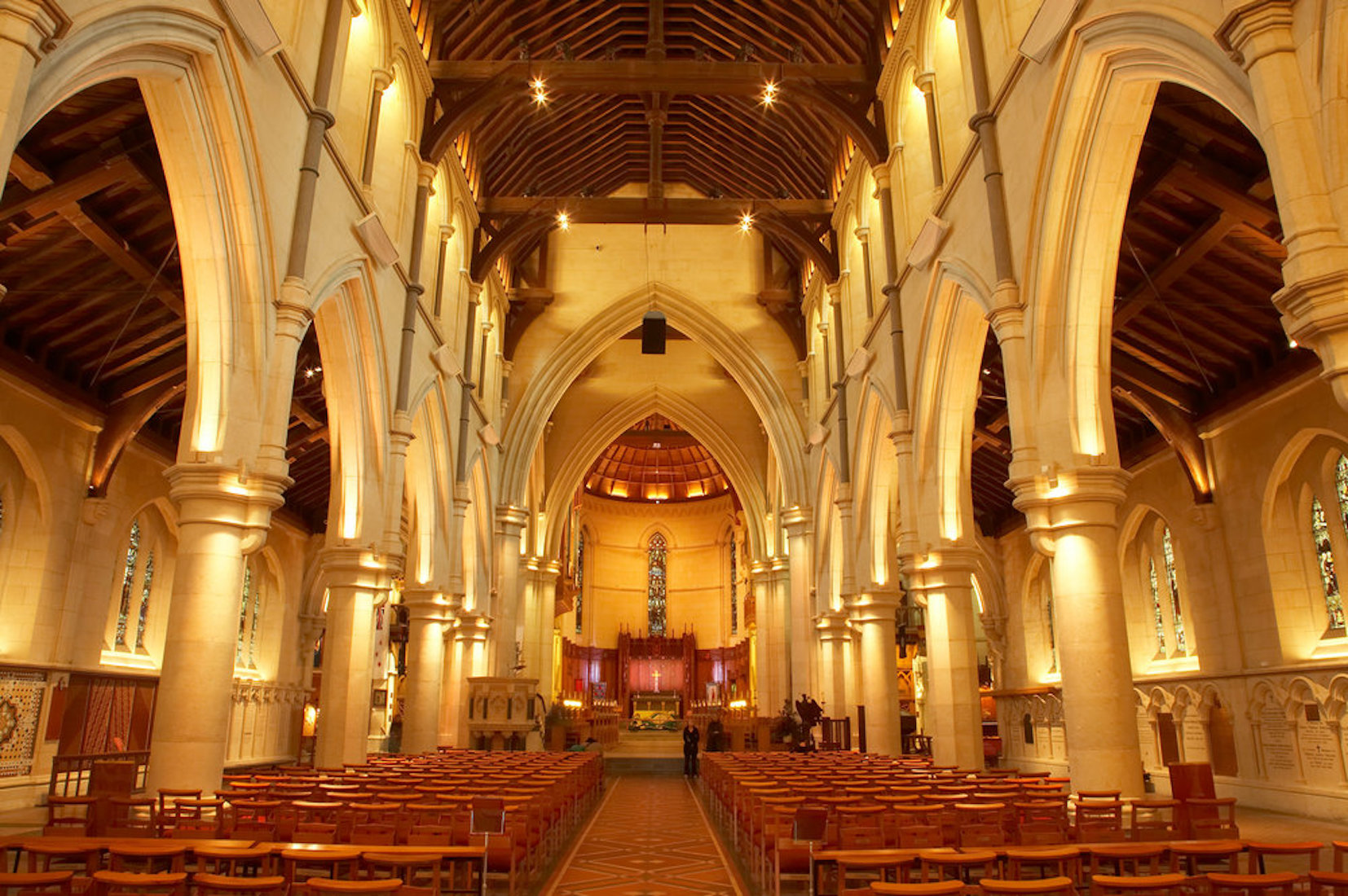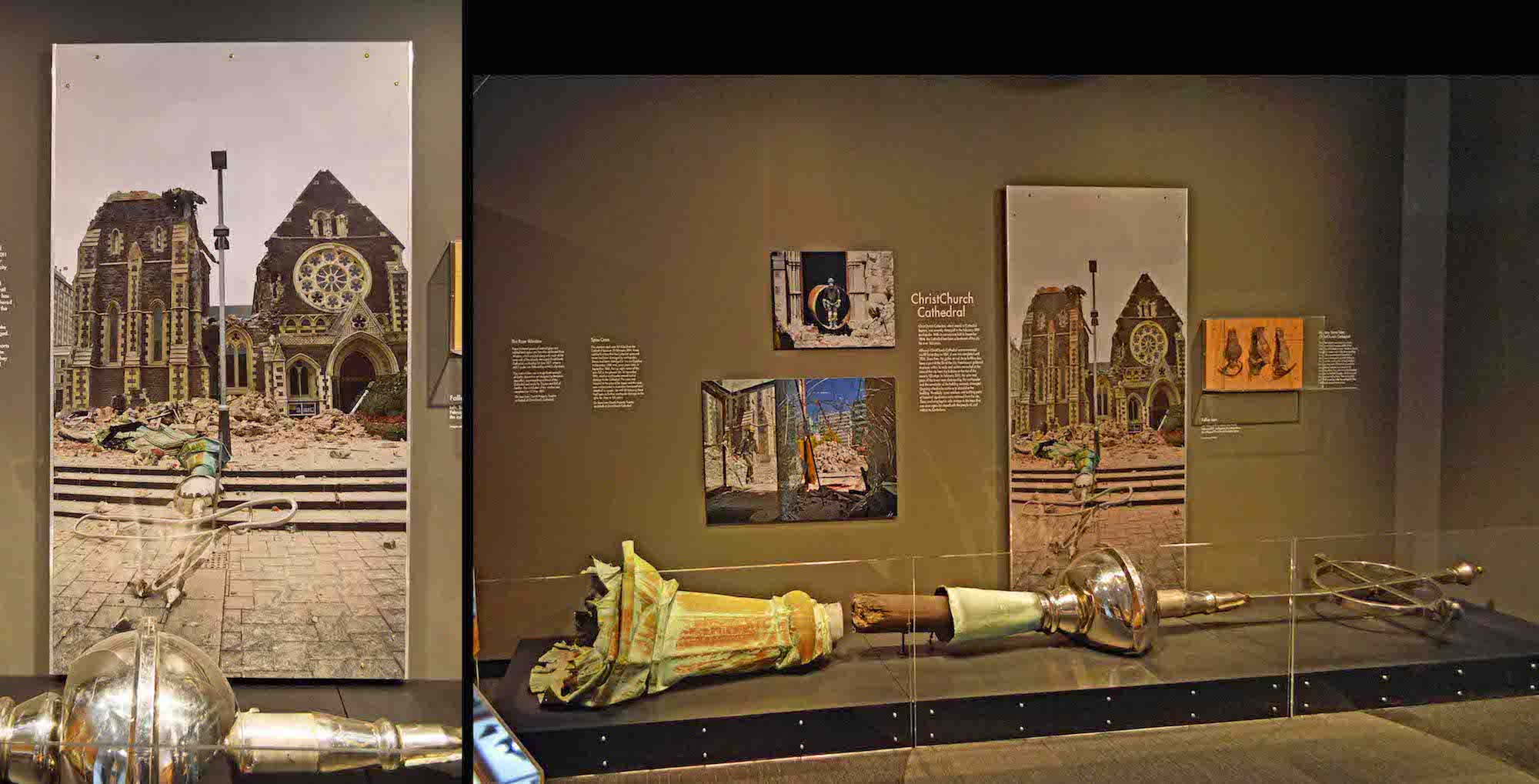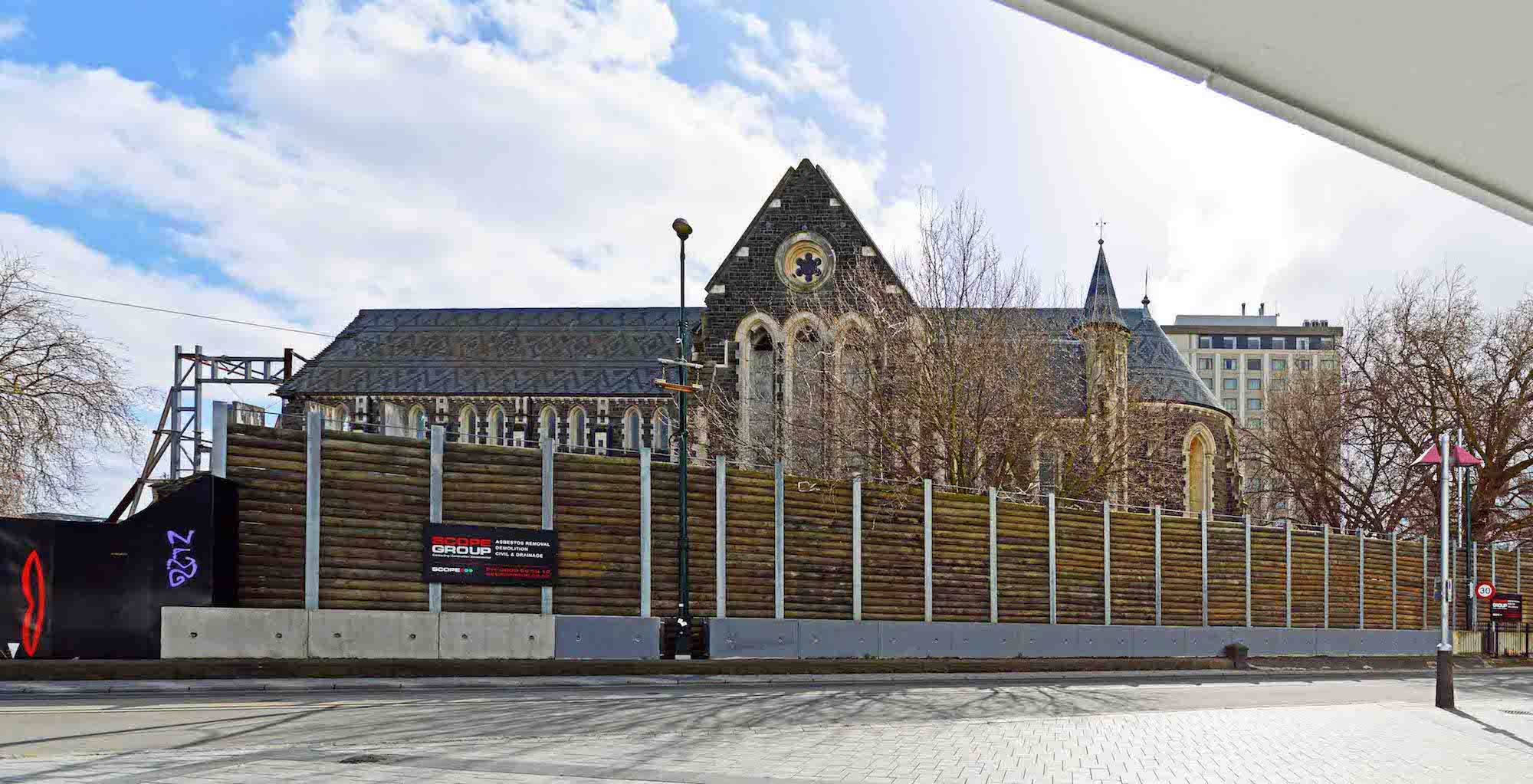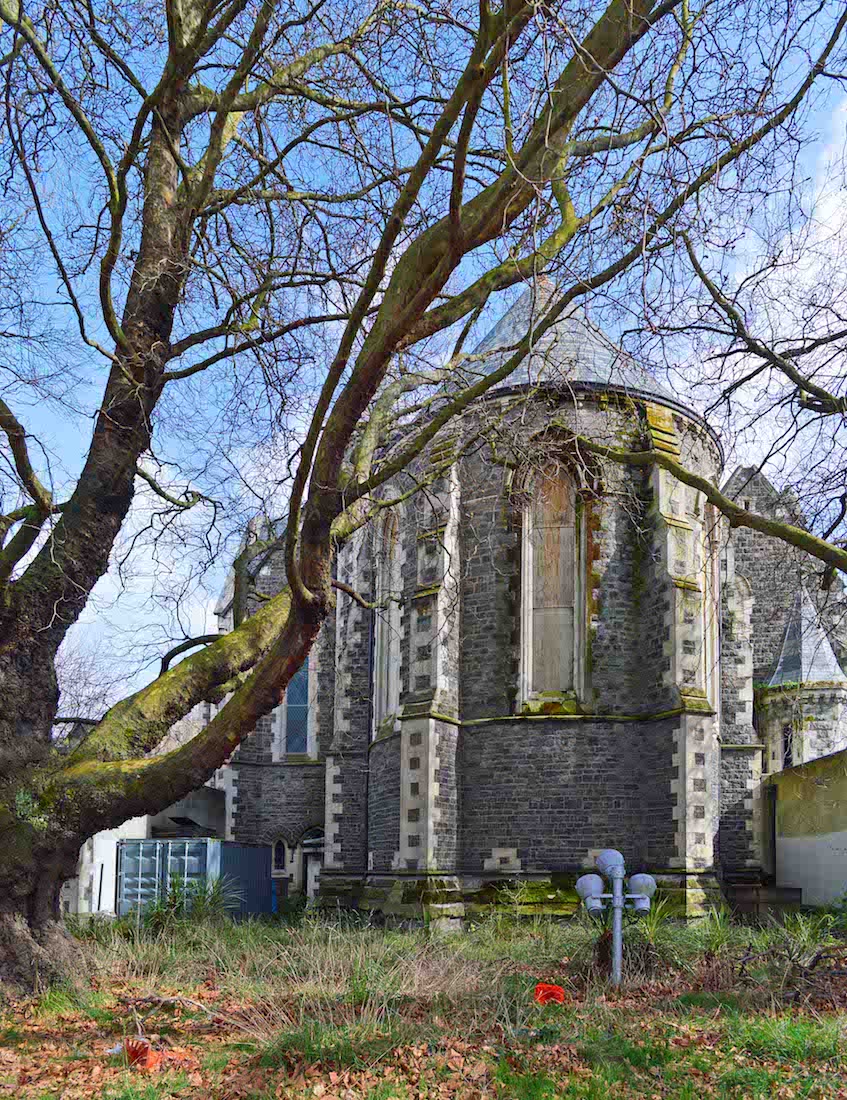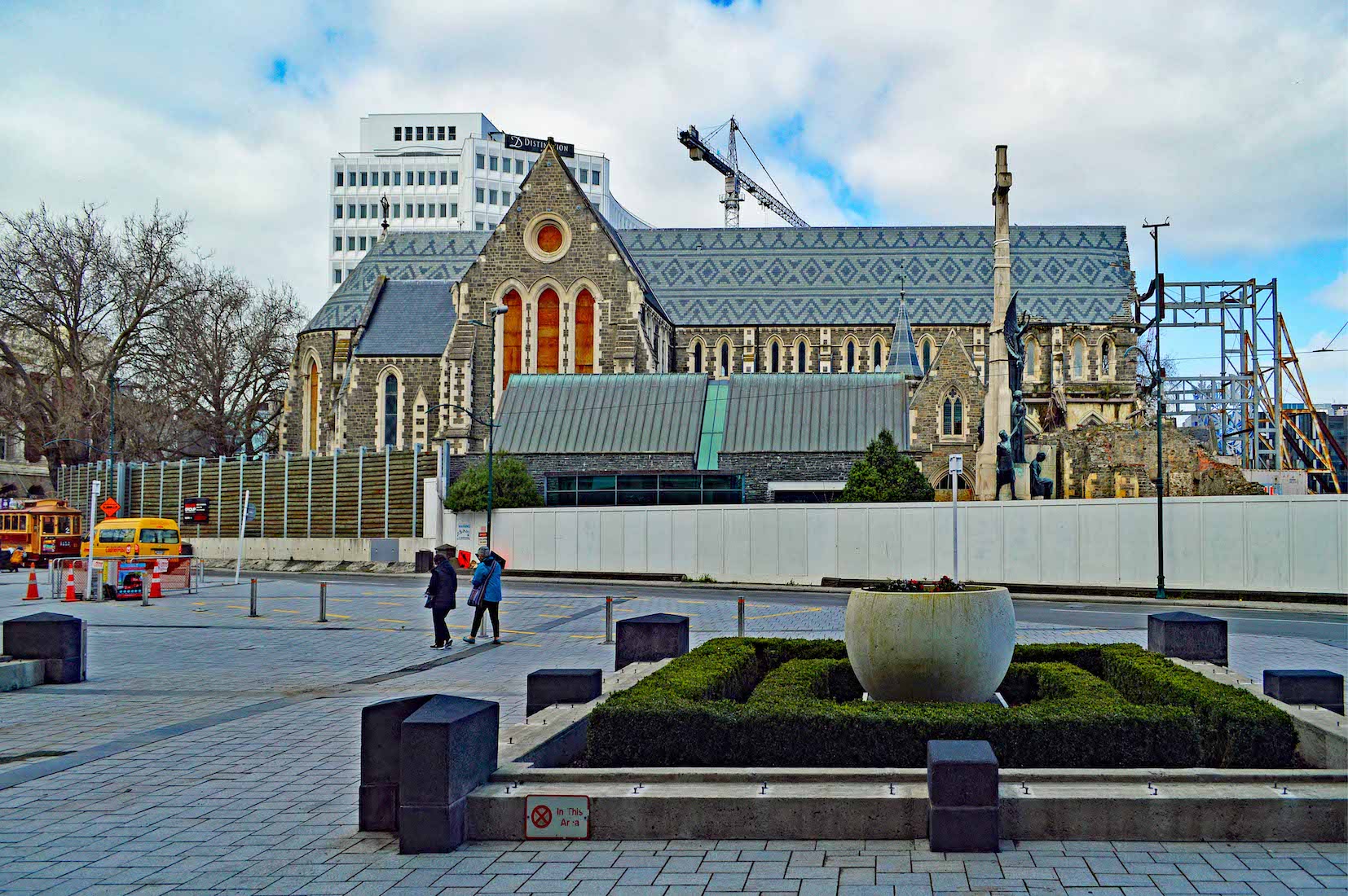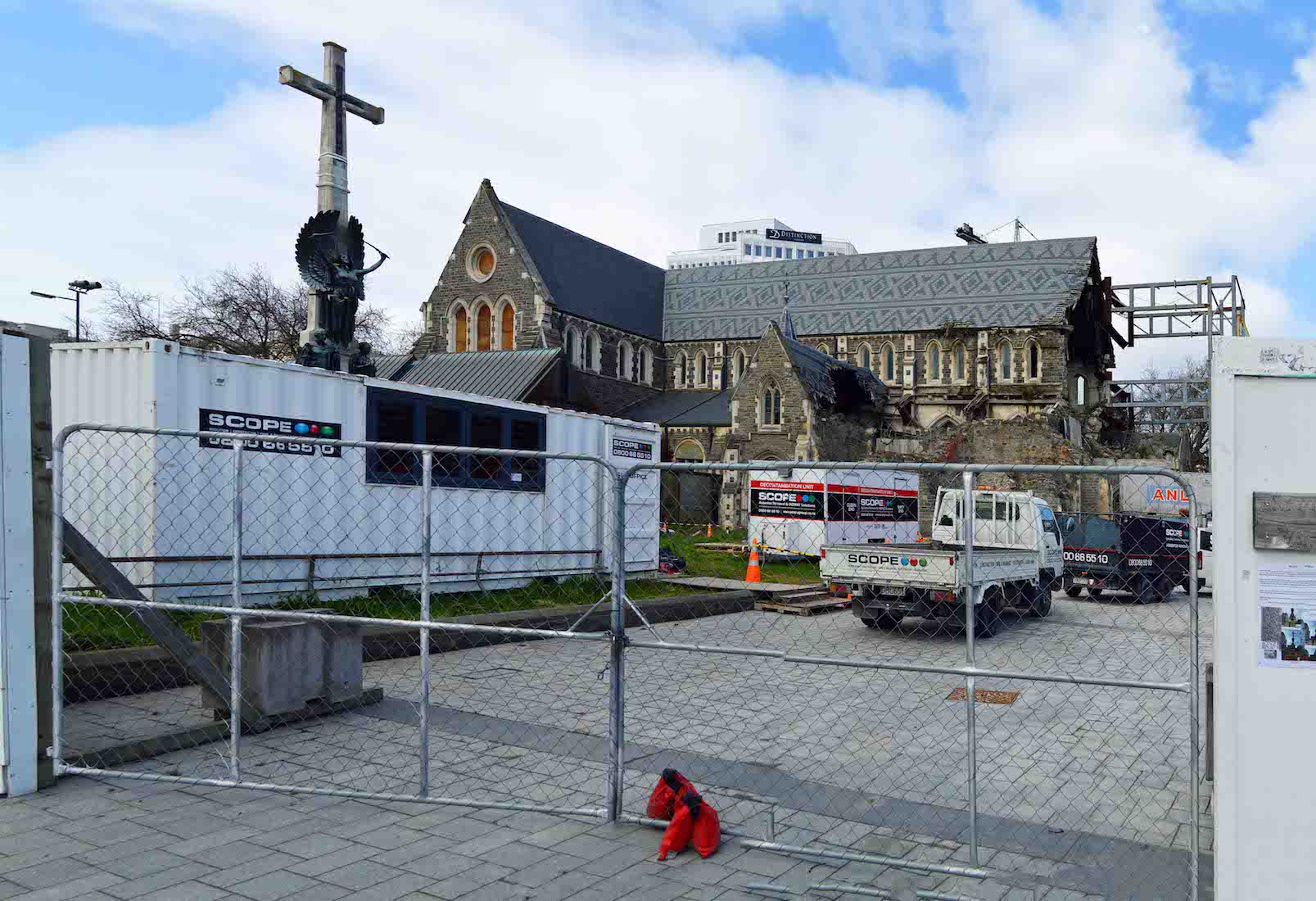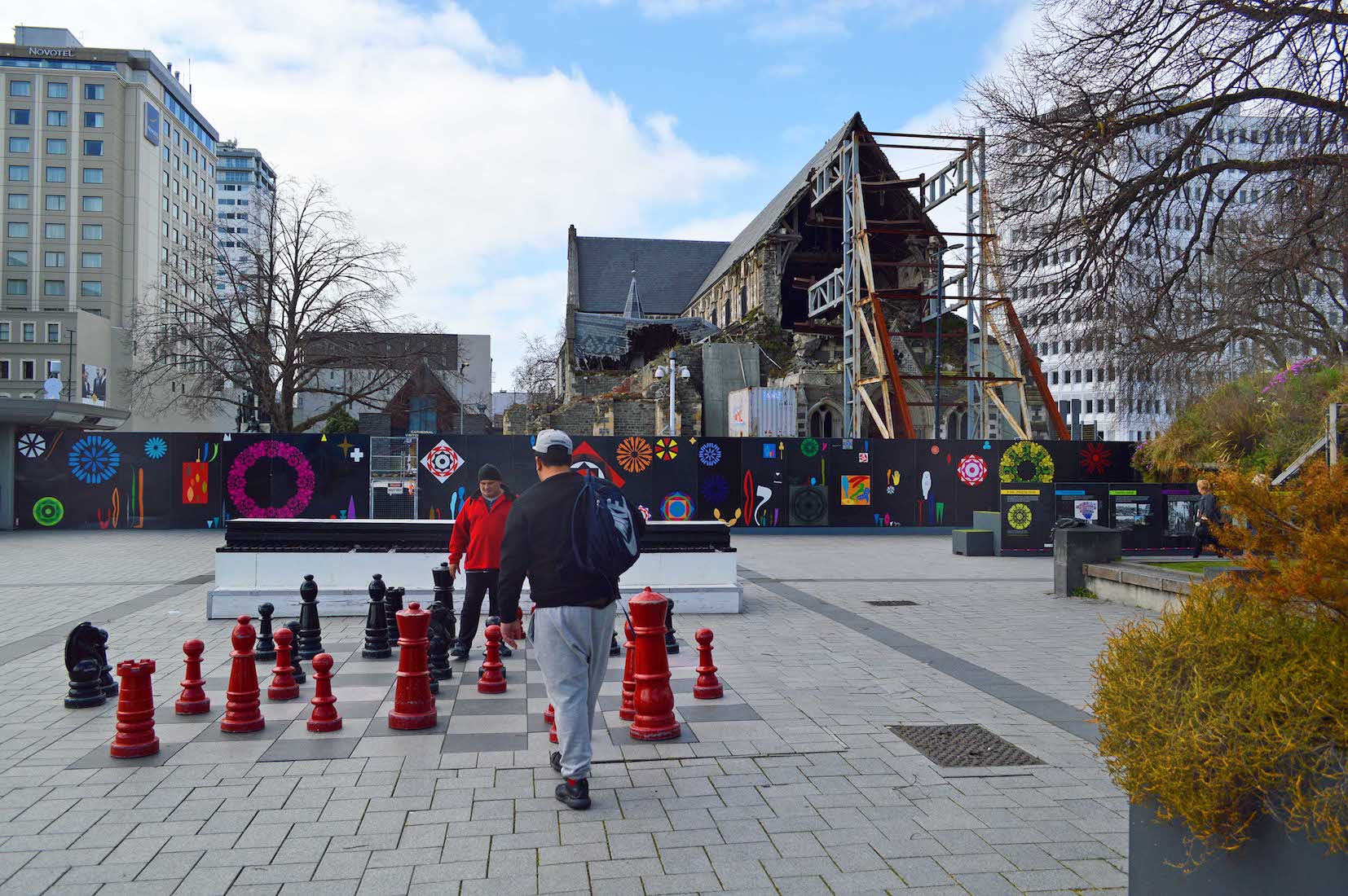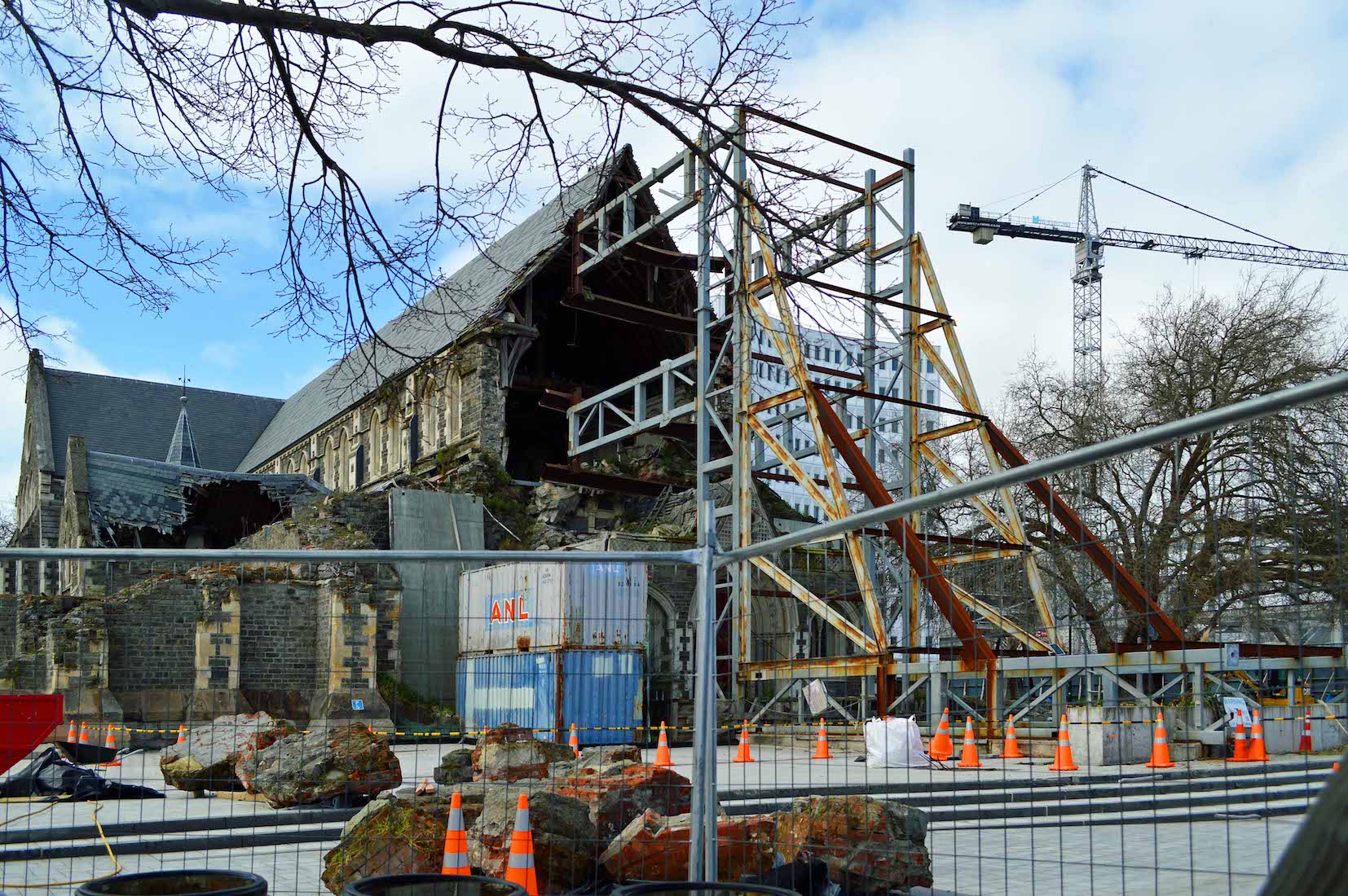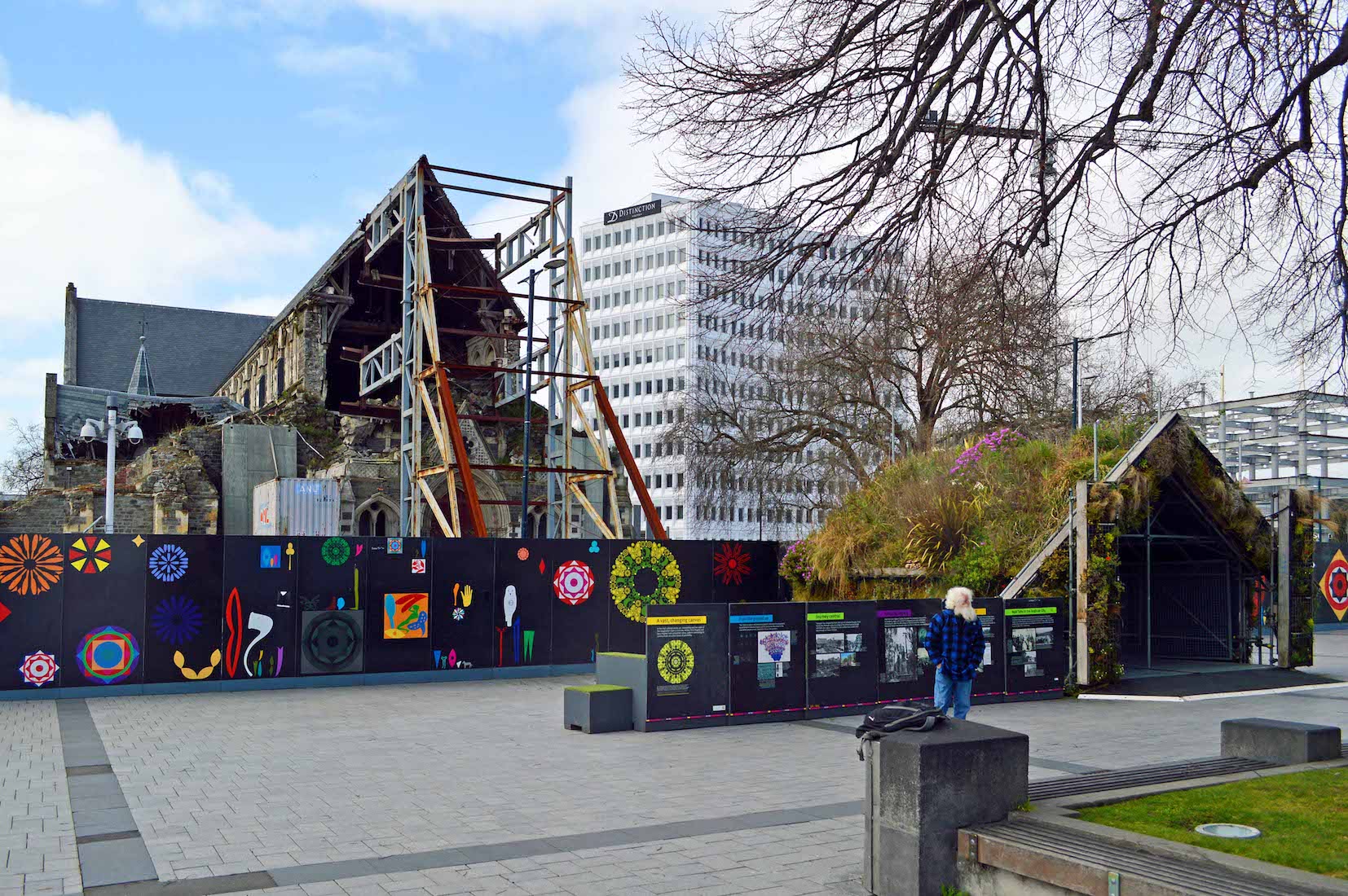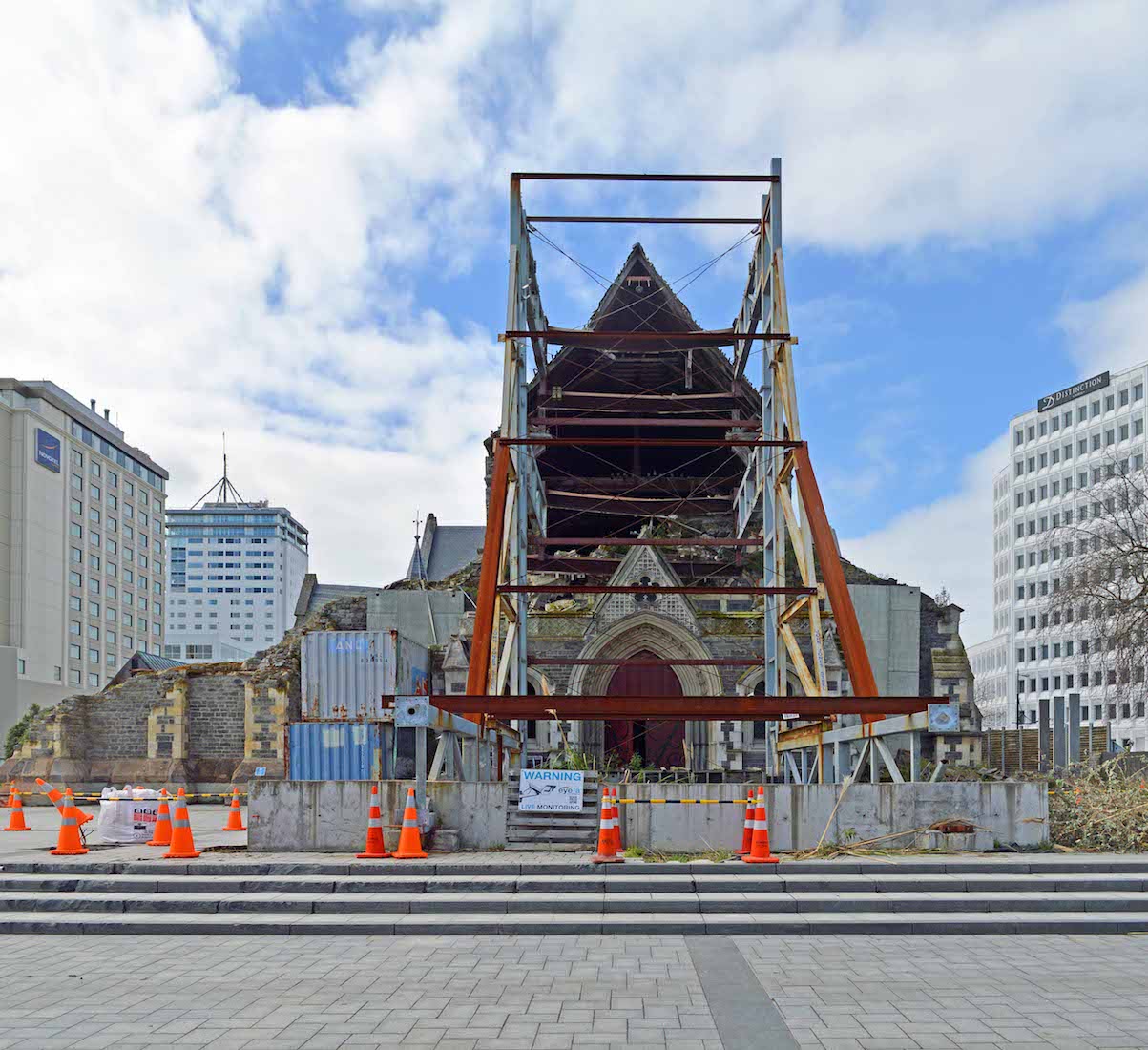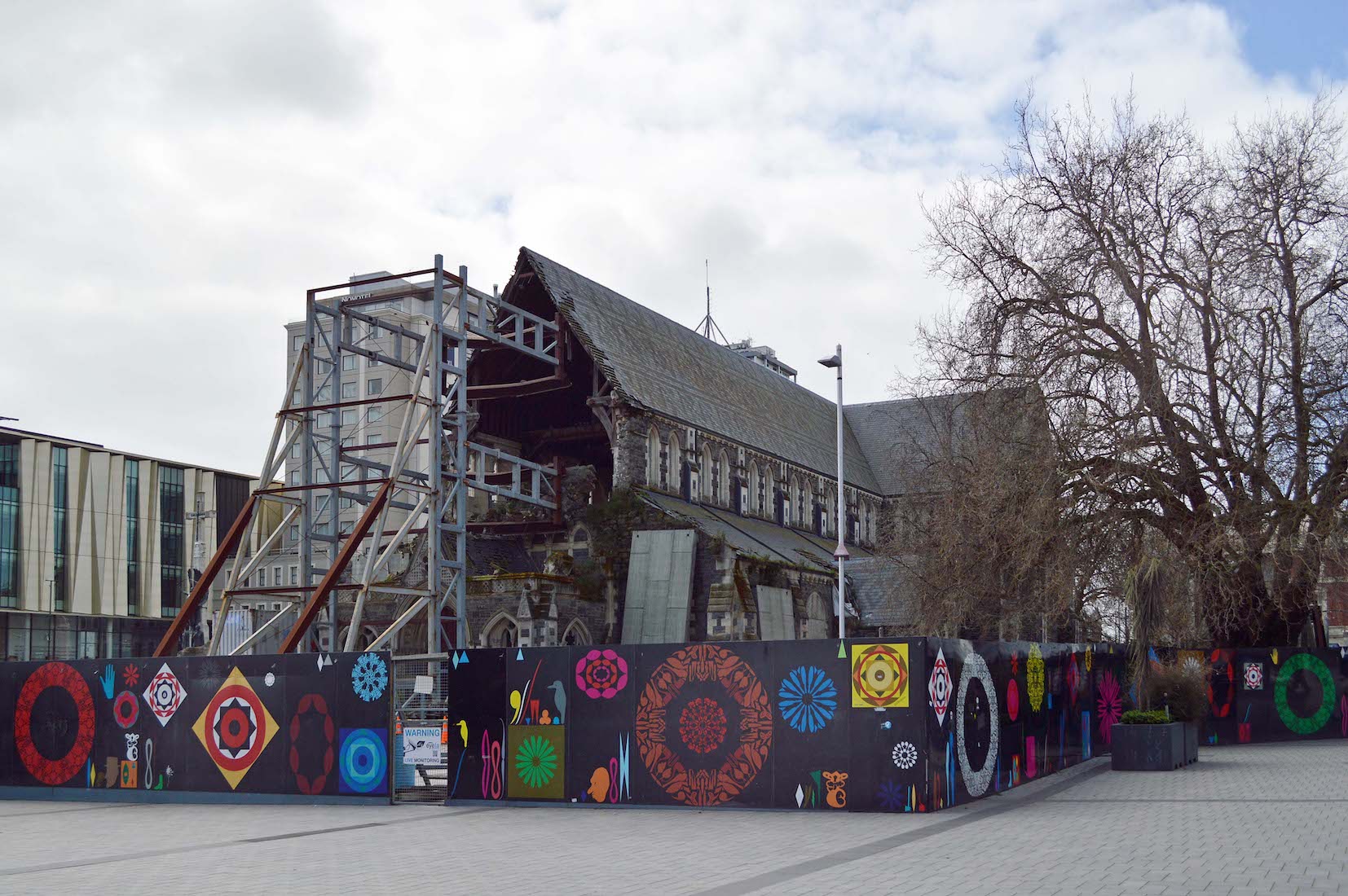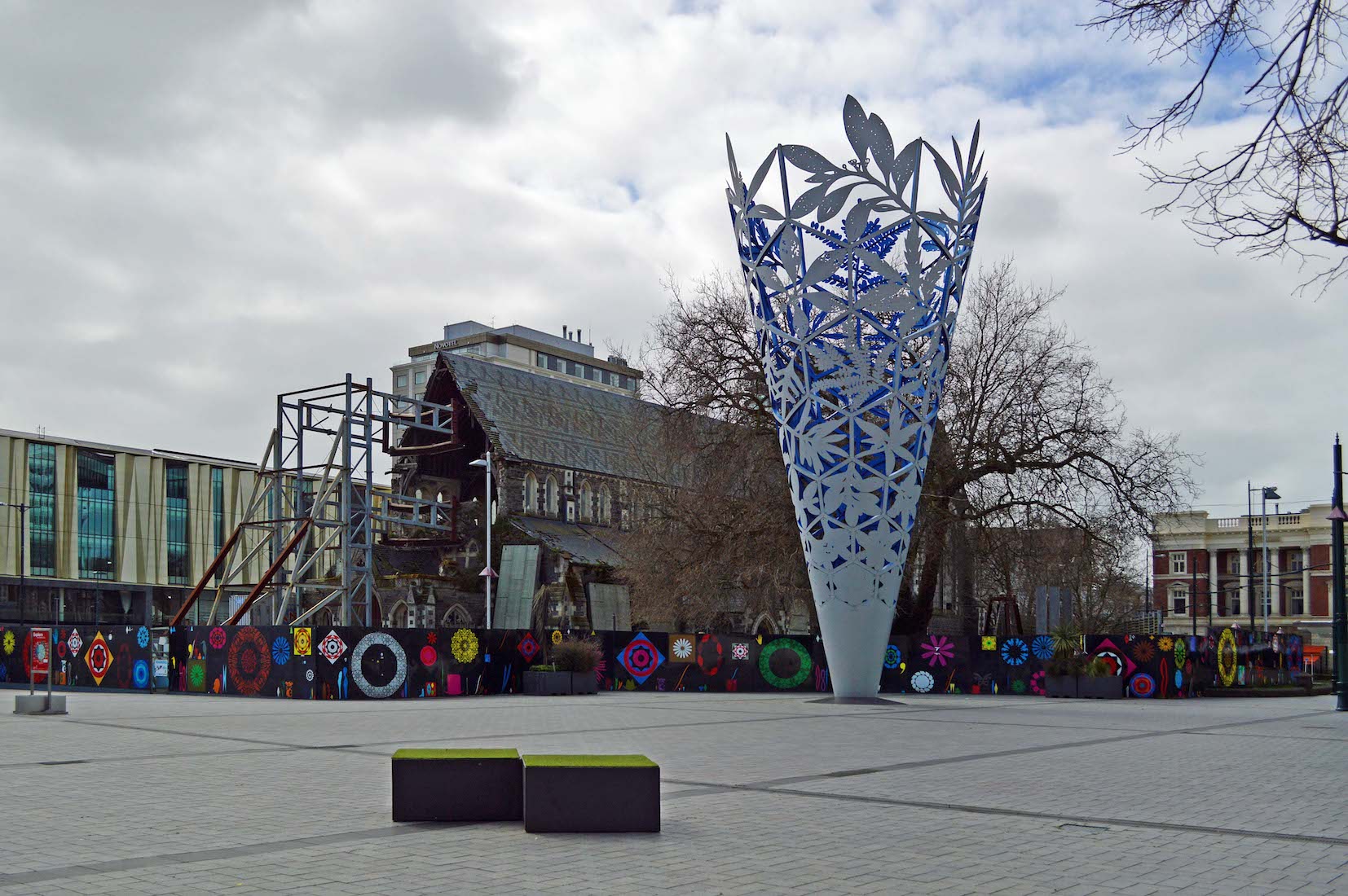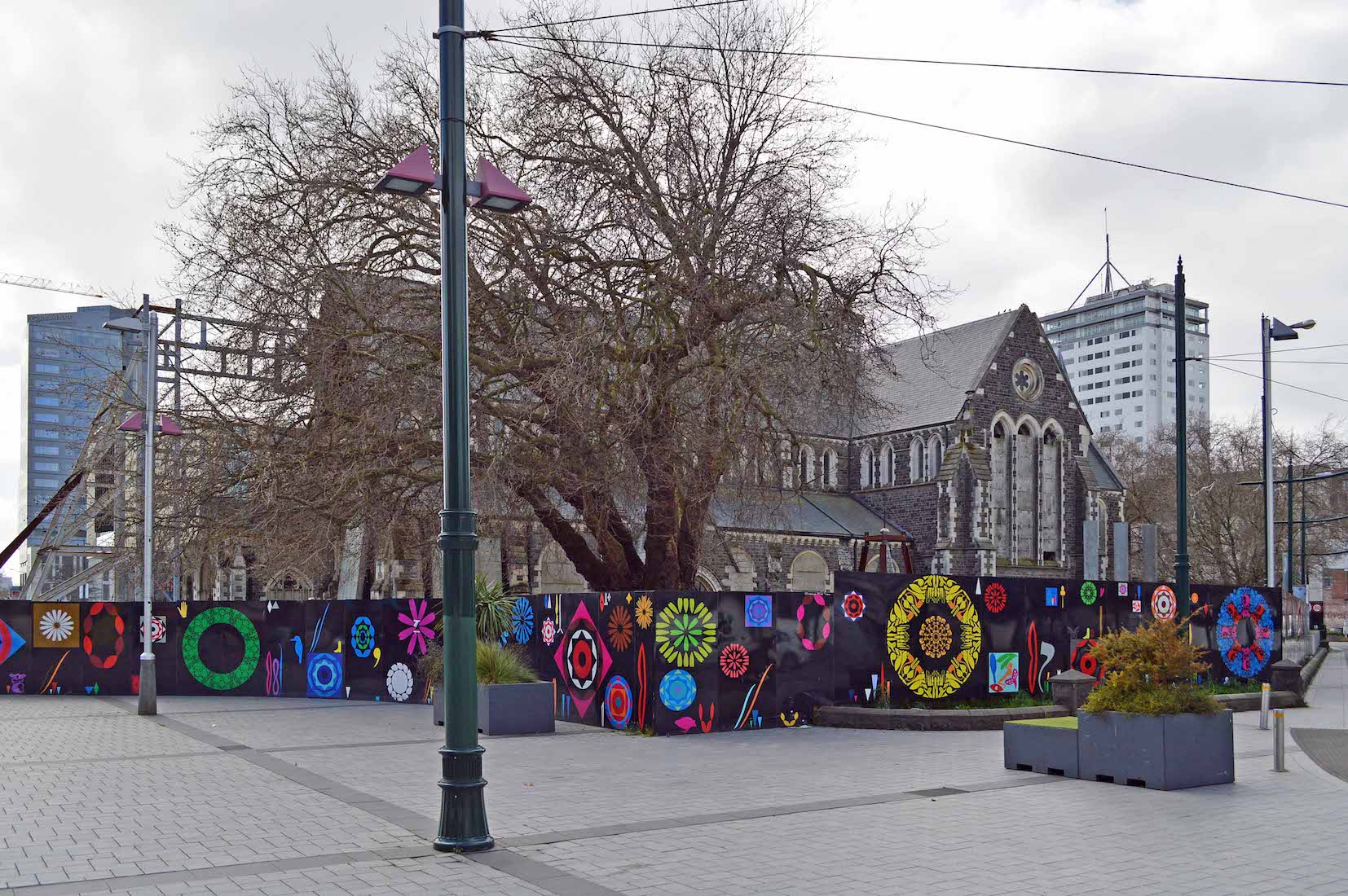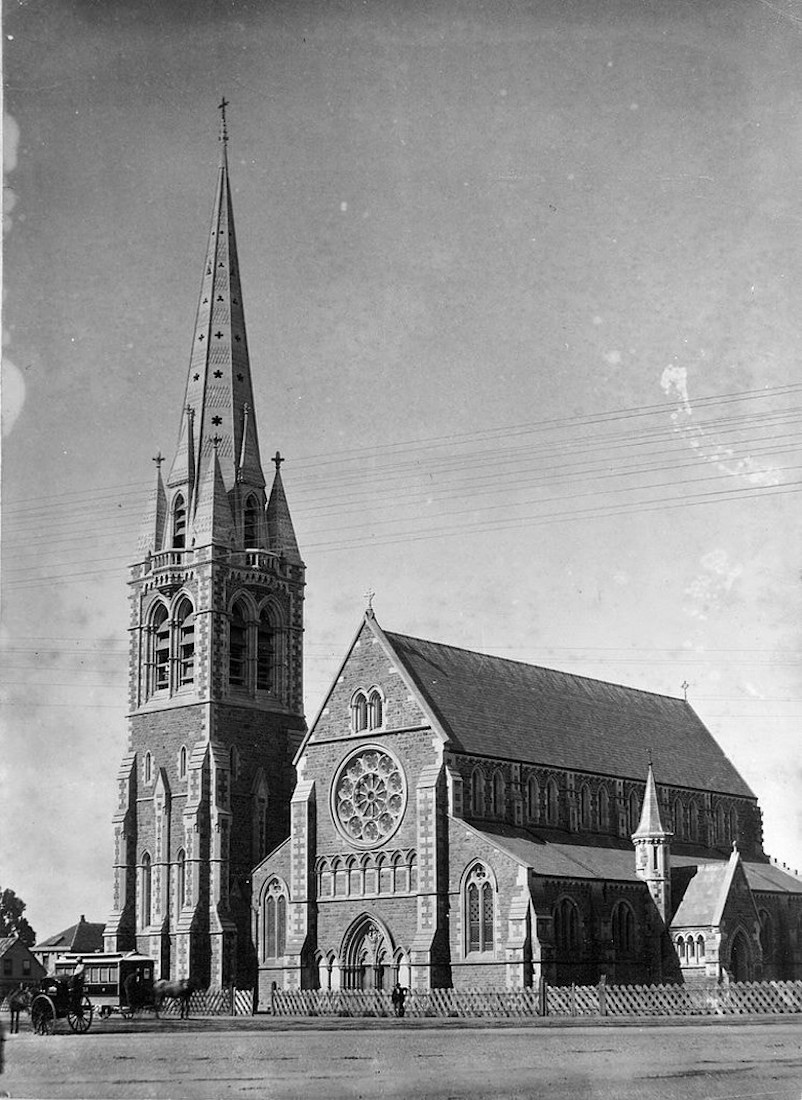
Christ Church Cathedral (or ChristChurch Cathedral or Christchurch Cathedral!) is a deconsecrated Anglican cathedral. In 1858 the building of the Cathedral was approved by the diocese and a design was commissioned from George Gilbert Scott, a prolific British architect known for his Gothic Revival churches. [Photo Credit: Alexander Turnball Library] PLAN
2. BEFORE THE 2011 QUAKE
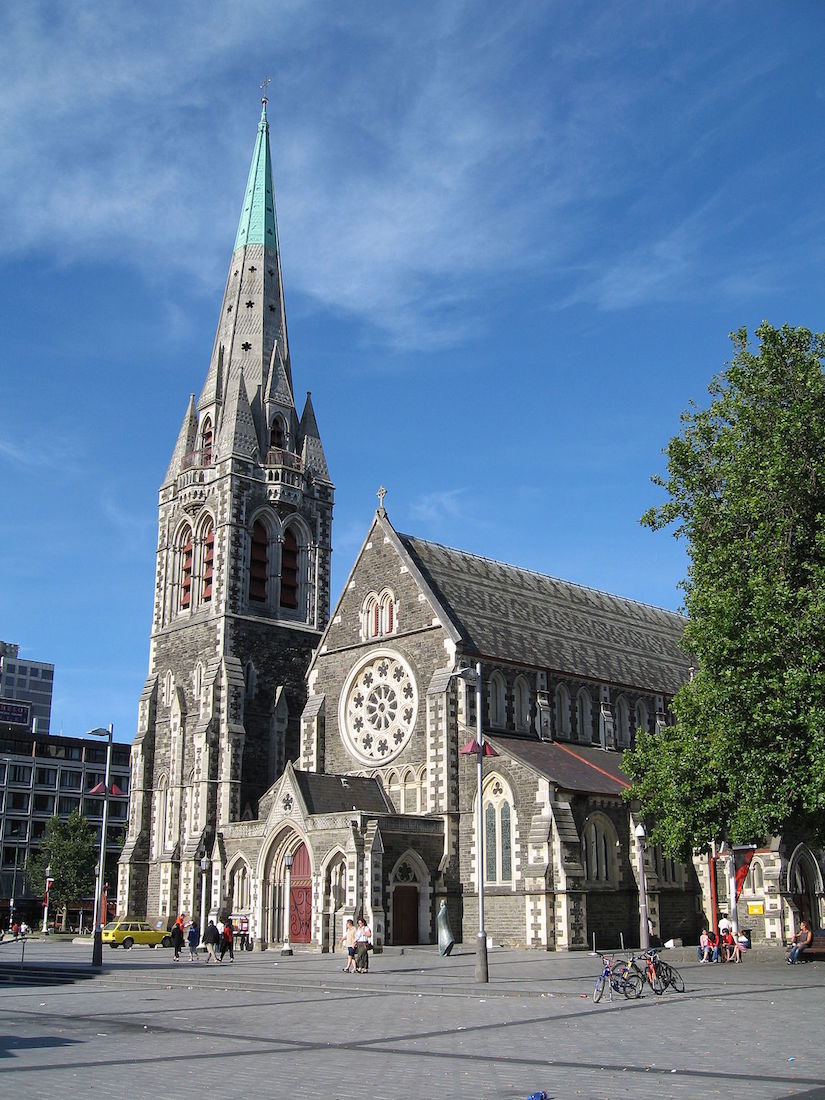
The cornerstone was laid in 1864, but lack of finance impeded building progress. In 1873 a new resident architect, New Zealander Benjamin Mountfort, took over and construction began again. The nave, 100 foot (30 m) long, and tower were consecrated on 1 November 1881. [Photo Credit: Wikipedia]
3. WEST WALL DETAIL BEFORE THE QUAKE
When Mountfort died in 1898, his son, Cyril Mountfort (1852-1920), took over as supervising architect and oversaw the completion of the chancel, transepts and apse, all of which were finished by 1904. [Photo Credit: Commons Wikipedia]
4. NORTHEAST VIEW BEFORE THE QUAKE
The spire reached to 63 metres (207 ft) above Cathedral Square. Public access provided for a good viewpoint over the centre of the city. The spire had been damaged by earthquakes on five occasions (1881, 1888, 1901, 1902, 2010). The tower originally contained a peal of ten bells, cast by John Taylor & Co of Loughborough, and hung in 1881. The original bells were replaced in 1978 by 13 new bells, also cast at Taylors. [Photo Credit: Wikipedia]
5. INTERIOR BEFORE THE 2011 QUAKE
The cathedral underwent major renovations during 2006 and 2007, including the replacement of the original roof slates. Then the February 2011 Christchurch earthquake destroyed the spire and part of the tower, and severely damaged the structure of the remaining building.
6. CENTRAL CHRISTCHURCH, 2018
It is now 2018, and we approach the city centre: desolation but also rebuilding. The remainder of the Cathedral tower was demolished in March 2012. The West wall suffered collapses in the June 2011 and the December 2011 earthquakes due to a steel structure – intended to stabilise the rose window – pushing it in. The Anglican Church had decided to demolish the building and replace it with a new structure – a controversial decision in post-quake Christchurch.
7. QUAKE CITY EXHIBITS
We visit Quake City, an exhibition which shows the devastation caused by the 2011 earthquake, not just to the Anglican Cathedral, but to the whole of the city centre. The fallen tip off the spire lies here. ••• It was announced in October 2011 that the Cathedral structure would be deconsecrated and at least partially demolished. Christ Church Cathedral was deconsecrated on 9 November 2011.
8. SOUTH VIEW
Leaving Quake City, we walk to Cathedral Square to view the Cathedral ruins. The South wall is largely hidden by a protective fence. We observe the steel frame supporting the West wall, the beautiful roof tiling patterns, the missing pieces of the South transept, the Eastern apse, and various missing windows.
9. EAST APSE
Apart from the glass missing from the windows, the Eastern apse appears to be in fairly good condition. ••• On 2 March 2012, Bishop Victoria Matthews announced that the building would be demolished. She questioned the safety of the building and stated that rebuilding could cost NZ$50 million more than insurance would cover and that a new cathedral would be built in its place. The decision was supported by 70 local Christchurch churches and Christian groups.
10. EAST VIEW
Standing further back, the apse is framed by two old plane trees, and there is little sign of damage – apart from the solid fence shielding the North wall. ••• In September 2012, Bishop Matthews suggested sharing a new church with the Roman Catholic community, as their place of worship was also damaged in the quakes. The Roman Catholic diocese was not receptive to the idea.
11. NORTHEAST VIEW
Tucked in by the North transept is a little chapel – perhaps the Chapel of St Michael and St George? ••• There was opposition to demolition of the Cathedral, with heritage groups including the UNESCO World Heritage Centre opposing the action. In April 2012, a group of engineers from the New Zealand Society for Earthquake Engineering launched a petition seeking support of 100 colleagues to stop the demolition.
12. NORTH WALL
In this view of the North wall, we see the Christchurch War Memorial and the Cathedral Visitor Centre in the foreground. The Visitor Centre was opened by the Queen in 1995 and helped accommodate the more than 300,000 visitors who visited the Cathedral annually. The war memorial by William Trethewey was unveiled in 1937.
13. NORTHWEST VIEW
We continue our walk around the Cathedral. There is a better view through this access gate, and work seems to be in progress – but to what end? We notice the high row of clerestory windows which once lined the sides of the nave. ••• In April 2012 the Restore Christchurch Cathedral Group was formed and sought signatures for a petition to save the Cathedral. In late March 2012, demolition began with removal of the stained glass windows and taking down the tower.
14. CHESS GAME!
I found Christchurch a sad city to visit, but there are signs of life returning to normal. ••• In November 2012 the High Court issued an interim judgement granting an application for judicial review made by the Great Christchurch Buildings Trust, challenging the lawfulness of the decision to demolish. This placed a stay on further demolition. In early December 2013, the Supreme Court rejected a bid to preserve the cathedral.
15. WEST END WORKS
Here we see what is left of the tower and spire – the ragged foundation at left, and the collapse of the whole West wall. ••• However, demolition did not recommence, as there was still another court case pending. In July 2015, Earthquake Recovery Minister Gerry Brownlee wrote to church leaders stating concerns that the lack of progress was holding up the earthquake recovery of the city centre.
16. WEST RUIN
Sadness at the destruction of the Cathedral is somewhat alleviated by the bright and vivid decorations on the separating fence. I noticed this in other parts of the city centre too: plantings of bright and colourful flowers helping to lift the spirits.
17. WIDER WEST VIEW
Here and in other parts of the city, we are surprised at the use of shipping containers to support insecure walls. ••• In December 2015, Bishop Matthews announced that the church had agreed to the negotiator's report that stated that “the building could be either reconstructed to be ‘indistinguishable’ from the pre-quake cathedral or replaced”. This brought to an end a stalemate of over three years with all parties agreeing to the report.
18. FROM THE SOUTHWEST
We have now reached the Southwest corner of the Cathedral ruins, near where we started. ••• In April 2017, Anglican leaders announced that they had commissioned another opinion poll; the fifth after two major surveys each in 2013 and 2014. This was justified as needing ‘up-to-date information’. In May 2017, Bishop Matthews announced that she had transferred the decision-making power from the Church Property Trustees (i.e. the legal owners of the land and buildings) to the 225-member diocesan synod.
19. CATHEDRAL AND CHALICE
Standing further back, our view includes the sculpture known as the ‘Chalice’. ‘Chalice’ is a stunning artwork which was created by Neil Dawson in 2001 to celebrate the new millennium and the 150th anniversary of the founding of Christchurch and Canterbury.
20. LEAVING THE OLD CATHEDRAL
We now leave the old Cathedral. I have great sadness at the loss and destruction of this beautiful building, and leave with a prayer for those who have the responsibility to rebuild ... in whatever way. ••• At a meeting of the diocesan synod in September 2017, Bishop Matthews announced that the synod had voted with a 55% majority that Christ Church Cathedral would be reinstated. She estimated that the project would be completed within 10 years.


